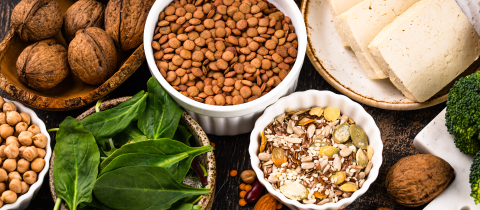Pet birds are very popular and loads of people have bird feeders in their back yards. That makes for birdseed being a huge business! Most people of course don’t give much thought to what it actually is, other than that it’s the stuff you put in your birdfeeder. And I would venture to say that the existence of a major crop called canary grass, grown on close to a third of a million acres in Saskatchewan, would be a surprise to almost everyone. Canary grass looks something like wheat and comes in two major varieties that are described as “itchy” and “itchless.” It isn’t hard to guess why. The seed hulls of the itchy variety are covered with fine little hairs of silica that during harvesting and handling can produce an irritating dust. Inhaling such fibers is potentially very irritating to the respiratory tract and may even be carcinogenic so dust masks are in order when working with this kind of seed.
Agronomists have come to the rescue and have developed seeds that do not have the little fibers and are therefore “itchless.” For commercial birdseed, canary seed is blended with seeds from millet, safflower, flax and canola. Sounds pretty healthy and is. At least for birds. But how about for humans? That question comes up because of information circulating on the Internet about canary seed “healing” diabetes and “hypertension.” Is there something to this or is it just the usual bird-brained nonsense that permeates the web?
Anytime you see the word “heal” in connection with diabetes or hypertension, your skepticism meter should swing into action. These are conditions that can be controlled but not healed. And how is canary seed supposed to perform its miraculous healing? It is “supercharged with enzymes,” according to the circulating info, and it is these enzymes that help with pancreatic ailments and with “swelling of internal organs like the liver, pancreas and kidneys.” Consuming the seed is also supposed to help with gout, gastritis and ulcers. And what could would any internet health message be if it didn’t include a claim for fat burning? In this case, not only fat burning, but “purification of fat in veins and arteries.”
To achieve these wonders, all we have to do is soak five tablespoons of canary seed in water overnight, then blend the seeds with soy milk and honey. This concoction is to be consumed twice a day. Is there any evidence for this? Of course not. Is there any scientific plausibility here? No. There is nothing special about these seeds. Yes, like any seed they do contain enzymes, but these are useless for us. Enzymes are proteins and are digested when consumed orally. The fat, protein and carbohydrate composition is like any other seed, with no other components of any magical quality. While canary seed will not treat anything other than hunger in birds, it may yet play a role in the human food supply as a replacement for sesame seed. Certainly growers of canary seed are looking to explore other markets than birds. But the bottom line here is so obvious that it is even a little embarrassing to say. When it comes to claims about healing properties of canary seed, well, those claims are for the birds.







